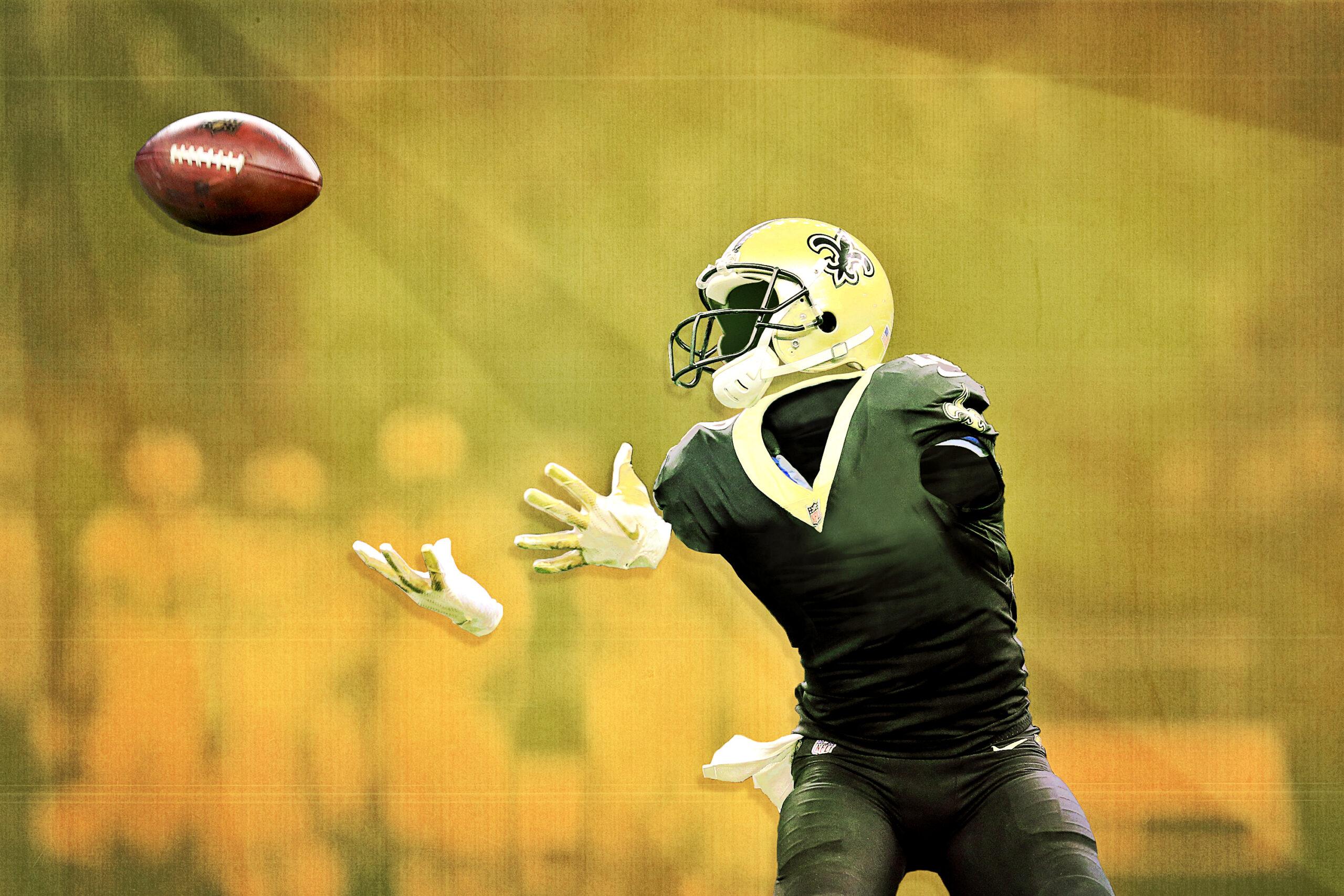
The NFL draft and free agency are both in the books, and while league rosters are far from set—trades, preseason cutdowns, and a few straggling free agents can still help teams fill gaps—it’s become much clearer what teams will look like next season. Perusing projected starting lineups and depth charts, it’s easy now to see where teams are the weakest; Some franchises spent the last few months adding impact players to bolster their most glaring holes, and others, well, didn’t. Here are eight teams that will head into next season with the biggest question marks at key spots.
Kansas City Chiefs: Cornerback
The Chiefs fielded one of the most dominant pass-rushing fronts in the NFL last year, but that didn’t translate into a top-tier pass defense thanks in large part to its porous back-end coverage. After finishing second to last in passing yards surrendered (273.4 passing yards per game), Kansas City set out to overhaul its disappointing defensive unit by firing coordinator Bob Sutton in favor of Steve Spagnuolo, offloading Justin Houston, Dee Ford, and a slew of other contributors, signing Tyrann Mathieu to a big free-agent contract, and trading for Seahawks pass rusher Frank Clark. But they didn’t do much to bolster one of their biggest vulnerabilities. The cornerbacks group may have gotten worse.
Kendall Fuller remains the foundation of that unit, but the team’s depth remains a huge question mark with the offseason departures of Steven Nelson (who played 1,164 snaps) and Orlando Scandrick (788 snaps). Instead, the Chiefs are left leaning on second-year corner Charvarius Ward (139 snaps), veteran Breshaud Breeland—who signed a one-year pact after playing in just seven games with Green Bay last year—and South Carolina’s Rashad Fenton, a sixth-round pick. Add in depth players like Tremon Smith and Keith Reaser, and it’s hardly a unit that inspires confidence. One divisional pass catcher is already looking forward to meeting the Chiefs this year.
Kansas City got better at safety by adding Mathieu and second-rounder Juan Thornhill, but there’s plenty of reason to be nervous about the quality and depth of its cornerbacks group.
Seattle Seahawks: Edge Rusher
The Seahawks added some much-needed draft capital and freed up cap space by trading Clark to the Chiefs, but in doing so severely weakened an already shallow pass-rush group. The team used the pick they acquired in that trade to select former TCU edge rusher L.J. Collier, but then looked to other positions with the rest of their 10 picks. They passed on day two edge rushers like Maxx Crosby and Anthony Nelson, both of whom could’ve contributed early. Collier may see starter snaps as a rookie, but it’s tough to expect him to produce consistently off the edge in year one.
Paired with a quiet free-agency period, Seattle’s edge-rush group is, to put it lightly, a major concern for 2019: The team needs sophomore defensive end Rasheem Green (who played just 201 snaps as a rookie and registered just one sack) to make a huge jump; they need 2018 sixth-rounder Jacob Martin (225 snaps, 3.0 sacks) to continue to develop; and they need Cassius Marsh or Nate Orchard (both acquired in free agency) to step up and contribute. Former Lions edge rusher Ziggy Ansah is reportedly in Seattle’s crosshairs, but even he’d be an uncertain asset after having shoulder surgery this offseason.
Taken together, Seattle may struggle to generate pressure by simply rushing with its front four in 2019. The team may have to get a little more creative than usual and lean heavily on blitz packages led by linebacker Bobby Wagner, hybrid safety Shaquem Griffin, or any combination of their defensive backs.
Jacksonville Jaguars: Receiver
The Jaguars upgraded their passing attack when they signed Nick Foles in March, but they did little to bolster their new quarterback’s receiver corps over the offseason. Jacksonville’s only free-agent move at that spot was to sign former Chief Chris Conley to a two-year, $4.5 million deal―and then the team all but ignored the position in the draft before signing five undrafted free agents (Marshall’s Tyre Brady, Southern Illinois’s Raphael Leonard, UCF’s Dredrick Snelson, Boston College’s Michael Walker, and Ohio’s Papi White).
That inactivity, paired with the departure of Donte Moncrief, leaves Foles without a true no. 1 on the outside and more questions than answers as to whom will emerge as his go-to guys, both deep down the field and in the red zone. Dede Westbrook (who led the team with 66 catches for 717 yards and five touchdowns last year) is effective running from the slot (where he lined up 89 percent of the time), but Marqise Lee is coming off an ACL tear, D.J. Chark (14 catches as a rookie) is still a work in progress, and Keelan Cole (38 catches, 491 yards, and one touchdown) remains inconsistent. Conley could end up breaking out for the Jags this year, but was never more than a tertiary option in Kansas City.
Atlanta Falcons: Defensive Line
The Falcons were heavily connected to multiple standouts in this draft’s defensive line class (especially Ed Oliver and Brian Burns), but the team ended up focusing on the other side of the line with its first two picks instead, and grabbed guard Chris Lindstrom and tackle Kaleb McGary with a pair of first-round picks (the latter of which came via a trade up). The team did add a mid-round edge player in small-schooler John Cominsky, but after a quiet free-agency period at the position (their only significant move was to sign former Patriot Adrian Clayborn), the Falcons left a lot to be desired this offseason in addressing one of its most pressing needs.
Atlanta has sunk several recent early-round draft picks into its pass rush with the selections of Vic Beasley (no. 8 overall in 2015) and Takkarist McKinley (no. 26 overall in 2017), but hasn’t had a lot to show from them in recent seasons: In fact, the Falcons had one of the NFL’s worst pass-rushing fronts last season, when they ranked 30th in pressure rate, per Sports Info Solutions, 22nd in sacks (37), and 26th in sack rate (5.9 percent). During the offseason, that disappointing group also lost Brooks Reed and Bruce Irvin. The good news is that the team could bolster its pass-rush unit by signing any of a handful of free agents like Ansah, Nick Perry, or Ndamukong Suh.
New York Giants: Edge Rusher
The Giants face major questions at multiple spots going into 2019, but to single out one position group, my question is this: How exactly does this team plan on pressuring the quarterback this season? New York finished tied for second to last in sacks in 2018 (30) and then traded away their best, most consistent rusher, Olivier Vernon, who led the team last year with seven QB takedowns.
Instead of grabbing one of the premier pass rushers in this draft with the no. 6 overall pick—Josh Allen, Brian Burns, Rashan Gary, and Montez Sweat were all on the board—GM Dave Gettleman opted instead to select Daniel Jones before grabbing a nose tackle in Dexter Lawrence at no. 17. The team didn’t address the edge-rush issue until the third round, and selected small-school standout Oshane Ximines. That puts a lot of pressure on the rookie out of Old Dominion to be an early impact player as the team prepares for this season with B.J. Hill (5.5 sacks in 2018), Lorenzo Carter (4.0 sacks), Kareem Martin (1.5 sacks), and Markus Golden (who logged 2.5 sacks in 11 games last year) manning the edge. Like Seattle, Atlanta, and Miami (I’ll get to them in a minute), New York still has a few options among the free agent pass rushers out there.
New Orleans Saints: Receivers
The Saints are set at the no. 1 receiver spot; Michael Thomas is a versatile and dynamic playmaking threat from everywhere on the field. But after Thomas, Drew Brees’s arsenal of receiving weapons is made up of a mishmash of mid-level vets (including Ted Ginn Jr. and Cameron Meredith; and I say that as Ginn’s no. 1 hype man) and relative unknowns (Keith Kirkwood, Tre’Quan Smith, Travin Dural, Deonte Harris, and Austin Carr). The team did little over the offseason to bolster that group, claiming former Redskin Simmie Cobbs off waivers and signing Lil’Jordan Humphrey as an undrafted free agent.
Brees is certainly good enough to make any one of these secondary options into a bigger household name, but New Orleans could’ve given their ageless quarterback a bigger infusion of talent at that spot in either free agency or the draft.
Dolphins: Edge Rusher
The Dolphins made a smart, low-risk move in trading for Josh Rosen, but that doesn’t change the fact that this team is in a full-on rebuild after dumping salary and a bevy of veteran players this offseason to build up valuable future picks and cap space (they should have somewhere around 13 draft picks and $120 million in cap space next spring). As a result, the Dolphins head into 2019 with a stark lack of edge-rushing talent: After dealing Robert Quinn to the Cowboys, letting Cameron Wake walk in free agency, and ignoring the position in the draft, Miami is left with a pass-rush group led by disappointing 2017 first-rounder Charles Harris and guys like Jonathan Woodard, Tank Carradine, and Jeremiah Valoaga.
New head coach Brian Flores could lean on exotic blitz looks to manufacture a pass rush, but that could make coverage more difficult in the back seven. In any case, the distinct lack of edge-rushing talent could create a ripple effect that weighs down the entire defensive unit .
Ravens: Inside Linebacker
The Ravens have yet to address the loss of All-Pro middle linebacker C.J. Mosley, who signed a big-money deal with the Jets in free agency. Baltimore used its eight draft picks this year to shore up other positions and after staying quiet in free agency, are left paper thin at the position with a projected starting tandem of third-year pro Patrick Onwuasor and Kenny Young, a fourth-round pick last year. The team could still look to add veteran depth at that spot—players like Zach Brown, Josh Bynes, Jamie Collins, Manti Te’o, and Albert McClellan are still out there—but even if they do, Baltimore’s lack of top-tier talent, experience, and depth remains a concern.

